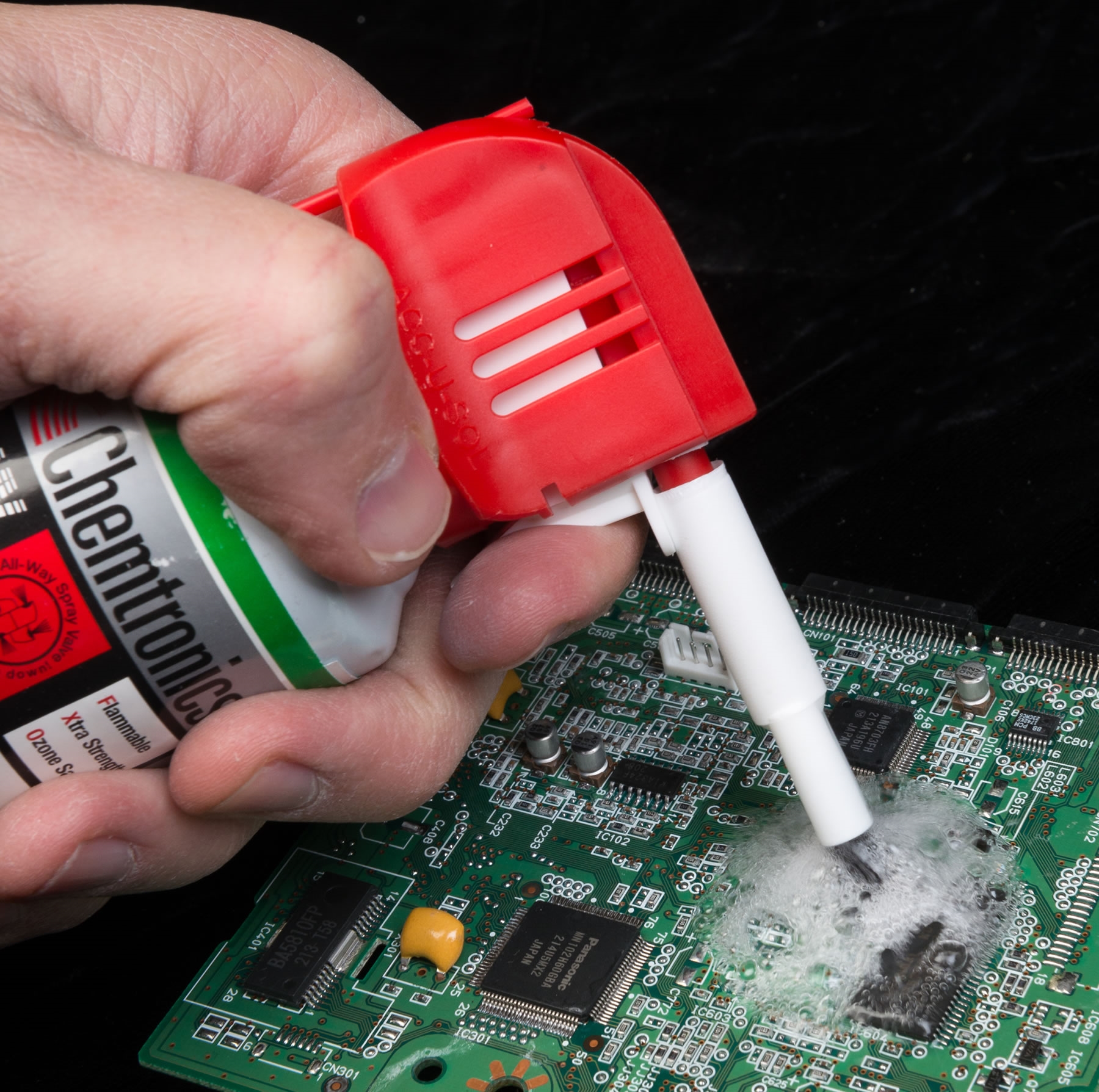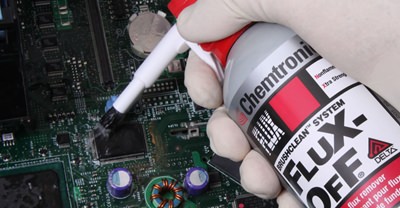The best cleaning method for your operation depends on your volume, throughput desired, criticality of the electronics, regulatory restrictions, and floor space.
The main options for board cleaning are…
- Manual cleaning - This can involve aerosol or pump sprays, or solvents in a pan or tray. Agitation can be applied with a brush, swab or wipe.
- Ultrasonic - This method uses sound waves to create bubbles, which implode on the PCBA surface to break up the flux residues.
- Vapor degreasing - The cleaning is done either in the vapor phase of a solvent, or submerged in a sump, which often includes ultrasonic action.
- Batch or inline systems - Spray equipment with water-based cleaners wash, rinse, and dry the PCBAs.
I’ll focus on aerosol cleaning, because that is the most practical if you are setting up a new cleaning operation. All defluxing processes basically involve…
- Dissolving the flux residue: Choose a cleaner that works best with your flux. A good match will reduce the need for extra soak time and agitation. When flux has been sitting for a long period of time, or has been baked on at high temperature or long reflow cycle, addition brushing might be required.
- Flushing or rinsing off the dissolved residues: Remember, once flux residues are dissolved, they won’t just evaporate off. They need a chance to flow off the circuit board. Holding the board at an angle while you are cleaning can help. A final rinse is always a good idea, and required if you are using a water-based cleaner.
- Drying the printed circuit board assembly (PCBA): For fast-drying solvents, this isn’t usually an issue. For water-based cleaners, you can accelerate drying with a duster, or use alcohol as a drying agent.
Ask A Technical Question
Stay up-to-date on Chemtronics news, products, videos & more.



